In today’s seminar, Duan presented her research on the intimate labors and gender performances of Bar Ts in lesbian Bars. As consumption venues that cater exclusively to women, lesbian bars serve as queer spaces where heterosexual norms are challenged, reinforced, and negotiated. While the dominant model of lesbian identity in China remains dualistic- divided into Tomboy (T) and Pure Girl (P), often defined by appearance or sexual behavior and modeled after heterosexual paradigms- Duan found that the identity of Bar Ts in lesbian bars has become more diverse and fluid. Rather than adhering strictly to the binary, these Bar Ts construct their personas through a hybrid model that combines both appearance and sexual role, in response to the diverse demands of the market.
Theoretically, Duan draws on the concept of intimate labor and gender performativity to analyze the gendered practices of Bar Ts as they serve customers in lesbian bars. Their intimate labors includes singing, dancing, flirting, drinking with clients, and potential sexual service. Due to ethical concerns, Duan was unable to conduct a participant-observation as a customer or Bar T, and instead relied on in-depth interviews to collect her data.
Her findings reveal that Bar Ts are expected to follow a detailed dress code-including specific hairstyles, clothing, and nail designs-in order to embody various configurations or appearance and sexual identity that align with clients’ idealized masculinities. To attract customers, Bar Ts perform a sexual tension through both appearance and behavior: they act like gentlemen to take care of clients, intentionally use casual touches to evoke clients’ sexual fantasies, and adopt ambiguous gender expression to shift fluidly between different customer expectations. Many Bar Ts come from less developed regions and engage in this work as a way to earn money, while others engage in it for fun or self-expression.
In conclusion, Duan’s research highlights how lesbian bars function as sites of fluid gender performance and commodified masculinity, where masculinities are carefully crafted, stylized, and marketed to appeal to consumer desires. While lesbian bars offer possibilities for fluid gender expression, these performances are nonetheless shaped by market imperatives.
Written by: CHEN, Jiangyi
The seminar featured ten insightful presentations exploring gender issues across various disciplines. Four MA students and six UG students shared their researches, employing methodologies ranging from qualitative interviews to textual analysis. Ana, Wang Ying, Ni Cheng and Tong Yuanxin are ma students. And Cheung Tin Ho, Chong Elvis Ryan, Hau Chi Fung, Leung Sau Kuen, Ng Hoi Wai Ivy and Tsang Yuet Yi, are six students from UG. Those presentations collectively examined themes of gender identity, resistance to traditional norms, and inclusivity in both contemporary and historical contexts, highlighting the interdisciplinary nature of gender studies.
First of all, there are four students from MA presenting: Ana investigated late autism diagnosis in Mexican women, revealing challenges like misdiagnosis and gender identity questioning. Wang Ying analyzed Esther Eng’s groundbreaking films (1936-1939), focusing on her transnational identity and subversion of early cinema’s gender norms. Ni Cheng critiqued Hong Kong’s discriminatory legal policies against female migrants from mainland China, exposing prosecution disparities. Tong Yuanxin explored smell as a narrative device in Chu Tiejun’s literature, connecting sensory descriptions to memory, trauma, and gender politics.
And six UG Students give us their amazing presentations: Hau Chi Fung examined gender stereotypes in Hong Kong KOL culture, noting male-dominated decision-making despite female platform dominance. Chong Elvis Ryan traced evolving gender roles in Hong Kong pop culture, observing increased neutrality and female empowerment in modern stars. Ng Hoi Wai Ivy studied Xiaohongshu users’ humorous resistance to traditional marriage norms. Tsang Yuet Yi documented female rugby players’ struggles with stereotypes and concussion risks. Cheung Tin Ho analyzed gender-fluid fashion’s role in challenging norms, using brands like Gucci as case studies. Leung Sau Kuen deconstructed masculinity in JoJo’s Bizarre Adventure, a famous Japanese animation, highlighting its fashion-conscious character portrayals.
These presentations demonstrated how gender intersects with media, law, sports, and art, providing both academic insights and calls for societal change. Each study combined rigorous methodology with critical perspectives on pressing gender issues.
Written by: YIN, Kangjun
Scholars have shown interest in queer spaces, particularly those catering to gay activities. On the contrary, the spaces for lesbian communities have received less scholarly attention because of their transient and non-physical nature. However, some queer spaces for lesbians, such as lesbian bars, have gradually become “visible” in some Chinese cities. In these lesbian bars, the Bar Ts are the central objects of consumption. The term “T” or Tomboy refers to lesbian women who exhibit more masculine appearances and behaviors. Within the bar environment, the Bar Ts offer a range of intimate services to guests, including hosting, singing, dancing, entertaining, flirting, and potentially providing sexual services.
On the basis of the theoretical framework such as the Masculinity framework (e.g., Connell & Connell, 2005; Connell & Messerschmidt, 2005), Gender Performativity Theory (e.g., Butler, 1988), and Dramaturgical Theory (e.g., Goffman, 1959), the researcher, Gloria Yawei Duan, conducted a study investigating the intimate labors occurring in the lesbians bars as well as the gendered performances and identities strategies of the Bar Ts. Using the methods of autoethnography and divergent ethnography, Gloria conducted in-depth interviews with participants with extensive experience as the Bar Ts, bar managers, or bar owners in Chinese lesbian bars. Through these interviews, insights were gained into the different kinds of intimate labors that the Bar Ts provide, the strategies that the Bar Ts employ for their gendered performance, the approaches that the Bar Ts use for different guests, and the boundaries concerning intimacies and sex services in lesbian bars. In the Q&A section, Gloria and the audience engaged in discussions regarding the differences in the meanings of some terms (e.g., “come ashore/上岸”) people use in lesbian bars and academia, as well as the distinctive characteristics of various types of Bar Ts.
Written by: HE, Chuting Connie
本週的性別研討會主題是“販賣男性氣概:中國女同性戀酒吧中台T的性別表演和親密勞動”。主講人Gloria DUAN通過對深圳女同性戀酒吧的深入觀察,和與相關從業人員的深度訪談,圍繞在酒吧空間中發生的親密勞動和性別表演展開了她的研究。
二十世紀九十年代,中國的性少數群體,主要是男同性戀群體,才開始建立自己的活動空間。與此同時,女同性戀群體的空間卻被壓縮而不可見,主要通過網絡維繫群體交往。過去十年中,“酒吧”成為了受到女同性戀群體青睞的場所,為性少數群體探索、實踐身份認同和性公民權提供了一種實體酷兒空間,吸引了女同性戀群體入場與停留,在其中消費與享受,也強化了T/P二分的分類模式。
T是Tomboy(假小子)的縮寫,原意指代女同性戀關係中呈現陽剛氣質、承擔主動性行為角色的個體,但在目前的語境下並不局限於外表特徵或是性角色。Bar T是指在酒吧中提供親密勞動的T屬性女同性戀,包括但不限於招待、娛樂、調情,以及潛在的性服務等。
在“親密勞動”“男性氣概”“性工作的酷兒視角”“性別表演理論”“擬劇理論”等理論框架下,Gloria提出了她的研究問題:如何成為一名Bar T,亦即酒吧管理人員和顧客的選擇標準是什麼?Bar T需要提供怎樣的親密勞動,她們又如何理解親密和性工作的界限?在這個社群內外Bar T如何建立自己的身份認同?做Bar T如何影響她們對男性氣概和T氣質的理解?Bar T在親密勞動中採取了怎樣的性別表演策略?
Gloria從以下三個方面分析了Bar T的性別表演策略。首先,Bar T類型各異,最受歡迎的是奶T、鐵T這類外形特徵男性化、更具“男性氣概”的類型。她們有一套具體的著裝規範——墊肩、束胸、穿增高鞋、妝容強調面部結構、服裝以黑白為主,留三七分的短髮……其次,她們有自己選擇顧客的標準。①長期穩定的客源關係。富有的顧客更偏好典型男性氣概、提供優質服務的Bar T,遵循一種傳統的T/P二分模式;②“爆金幣”,即在短時間內進行數額較大的消費;③尋找具有魅力的顧客,並在工作過程中追求情緒價值並享受樂趣。最後,Bar T也有留住顧客的方法論——規劃並展演吸引力(seduction)、循序漸進地製造肢體接觸、讓顧客保持新鮮感並感受真實性、避免自己與單一顧客強綁定……
除此之外,Gloria以“抱抱睡”(BBS)為案例,探討了親密勞動和性工作之間的邊界。在後續研究中,她將繼續關注Bar T之間的競爭-互助動態和她們自身對“男性氣概表演”的認知、女同性戀酒吧的管理策略、並在經濟政治關係的宏觀語境中深入透視女同性戀社群的文化實踐。
Written by: SHEN, Jun
在本次seminar中,主講人Gloria Duan介紹了她關於中國女同性戀酒吧的民族志研究。她指出,儘管酷兒空間在中國城市中逐漸受到關注,但是目前相關研究多集中在男同性戀群體的空間實踐,例如Gay Bar;而女同性戀群體的空間常常是短暫的或存在於線上,其現實中的需求卻長期被忽視。
然而,過去十年裡,一些城市出現了固定的女同性戀酒吧(Lesbian Bar/ 拉吧),其中“台T ”(指在酒吧中提供服務的偏男性化的女同性戀者)成為這些空間中的核心服務角色。她們在酒吧中承擔主持、表演、調情等親密勞動,甚至一些邊界模糊的“性活動”,形成了獨特的性別表演與身份表達方式。主講人希望通過民族志的方式,探索這些空間的運作模式、性別實踐和文化意義。
尤為有趣的是,主講人在探究塑造“台T”的因素時,採用了Judith Butler的“性別表演”理論作為理論基礎之一,也就是說,她認為“台T”更多的是表演出來的。她認為她們的著裝要求,妝容特點、說話的語氣,行動的風格,都是在表演符合女性顧客的審美中的“男性氣質”。這與作為“台T”的服務者本人的個性和偏好無關,與這個女同性戀空間的文化氛圍要求關係更加緊密。在這個場域下,T和P的分類也被兩極化,按照二元劃分的原則來方便顧客挑選服務。不過,有時候,不同地區的拉吧會對“台T ”們有不同的審美,如奶T、娘T、鐵T等,因此促使T們也演變出很多針對特定區域的不同流行類型。畢竟符合女性消費者的審美,提供滿意的情緒價值就是“台T”們主要的任務,她們需要通過這樣的互動保證自身的經濟收入。
並且,“台T”與顧客的互動不是單向的,在顧客挑選“台T”的時候,“台T”也會對客戶進行挑選,並偏向於能夠長期維護的穩定的富裕客戶,以方便在後續的關係推進中引導顧客提供更多的經濟支持。尤為需要注意的是,“台T”需要在維護客人的時候保護好自己,控制親密行為的程度,但是同時有需要具備足夠的誘惑力,是一項具有相當難度、需要不斷動態調整的工作。
整體而言,這是一次將視線集中在少數群體身上的,關於性別與空間關係的細緻文化觀察,令人印象深刻,引人深刻。
Written by: CAI , Yuxuan


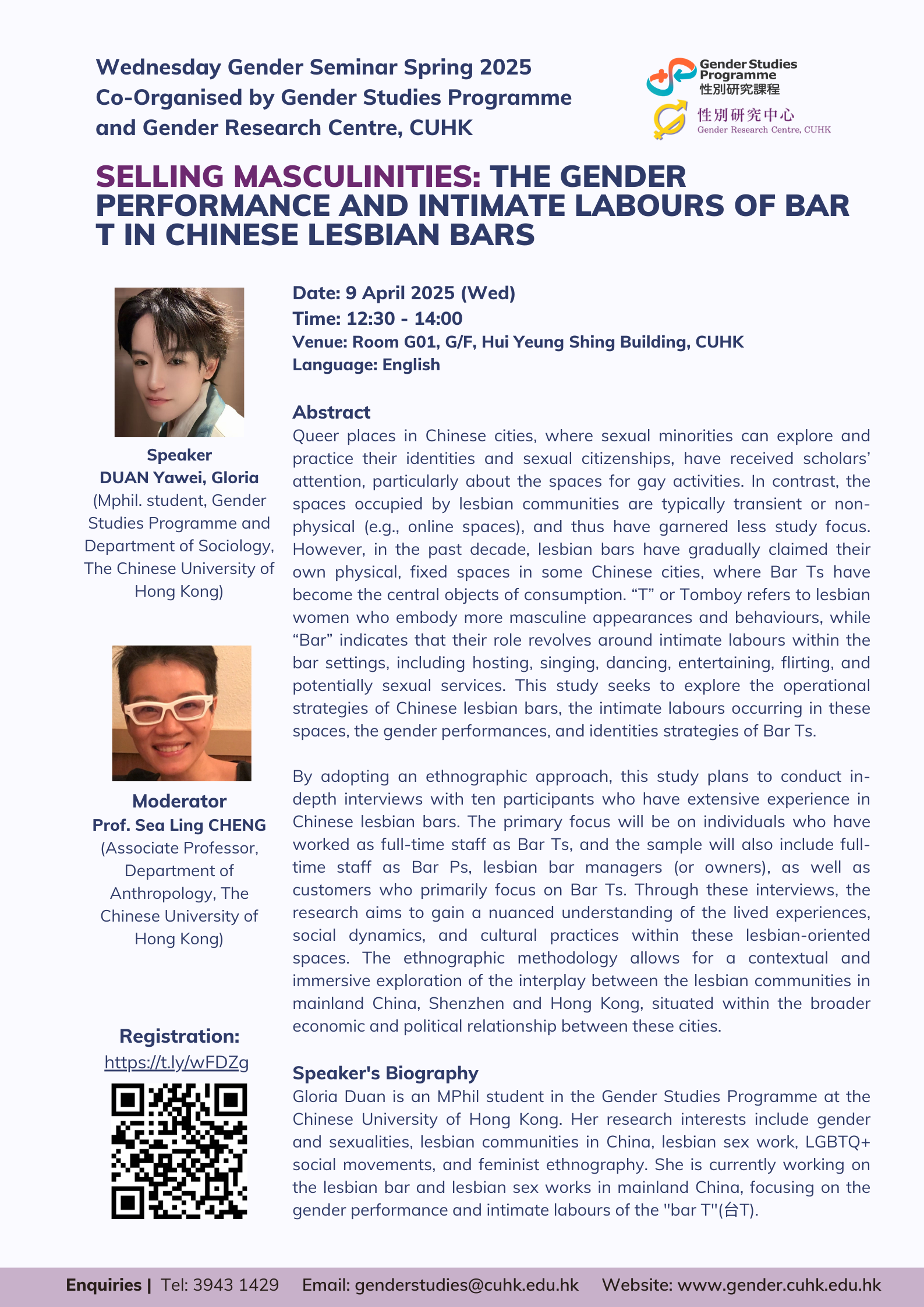
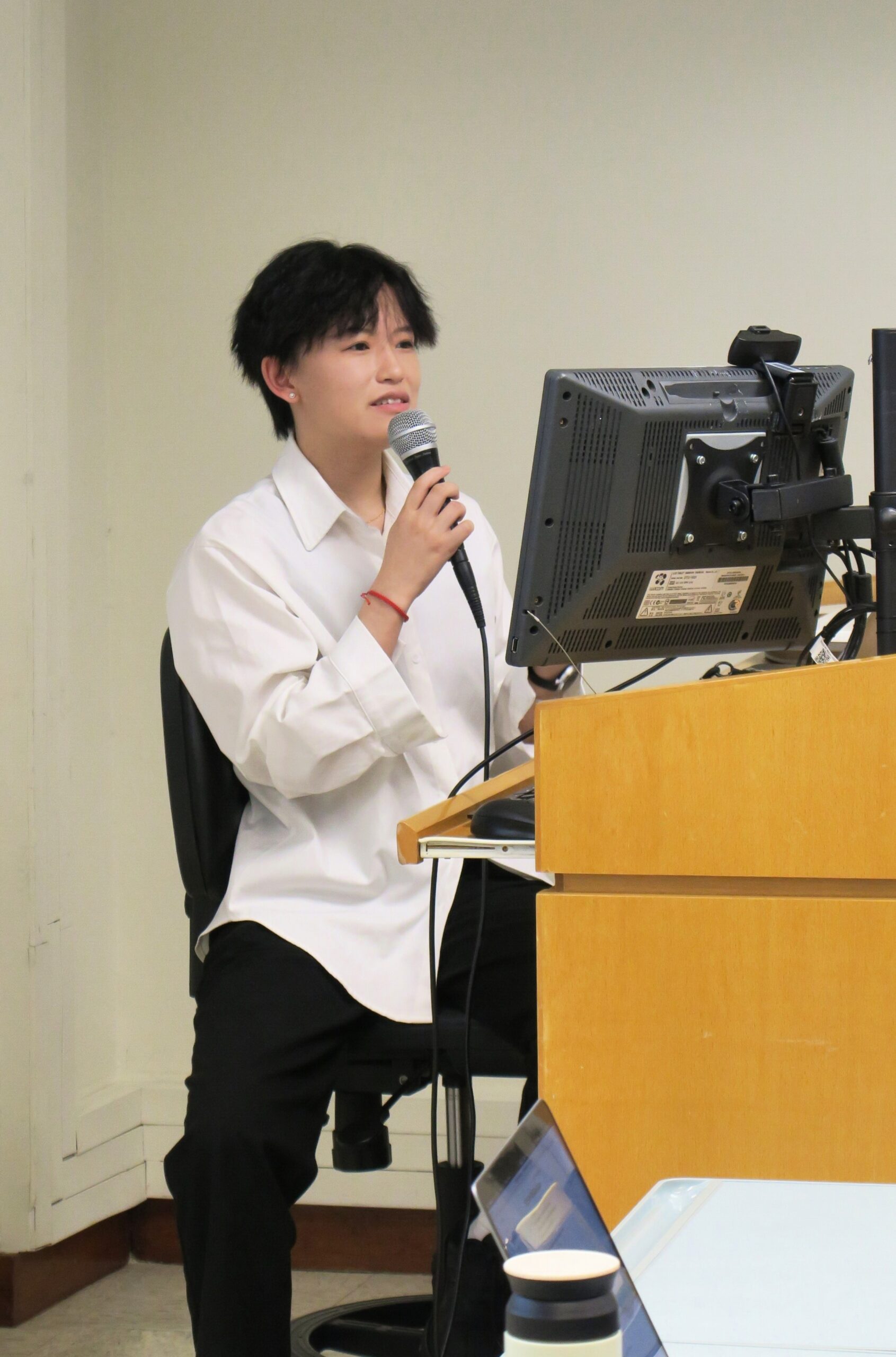
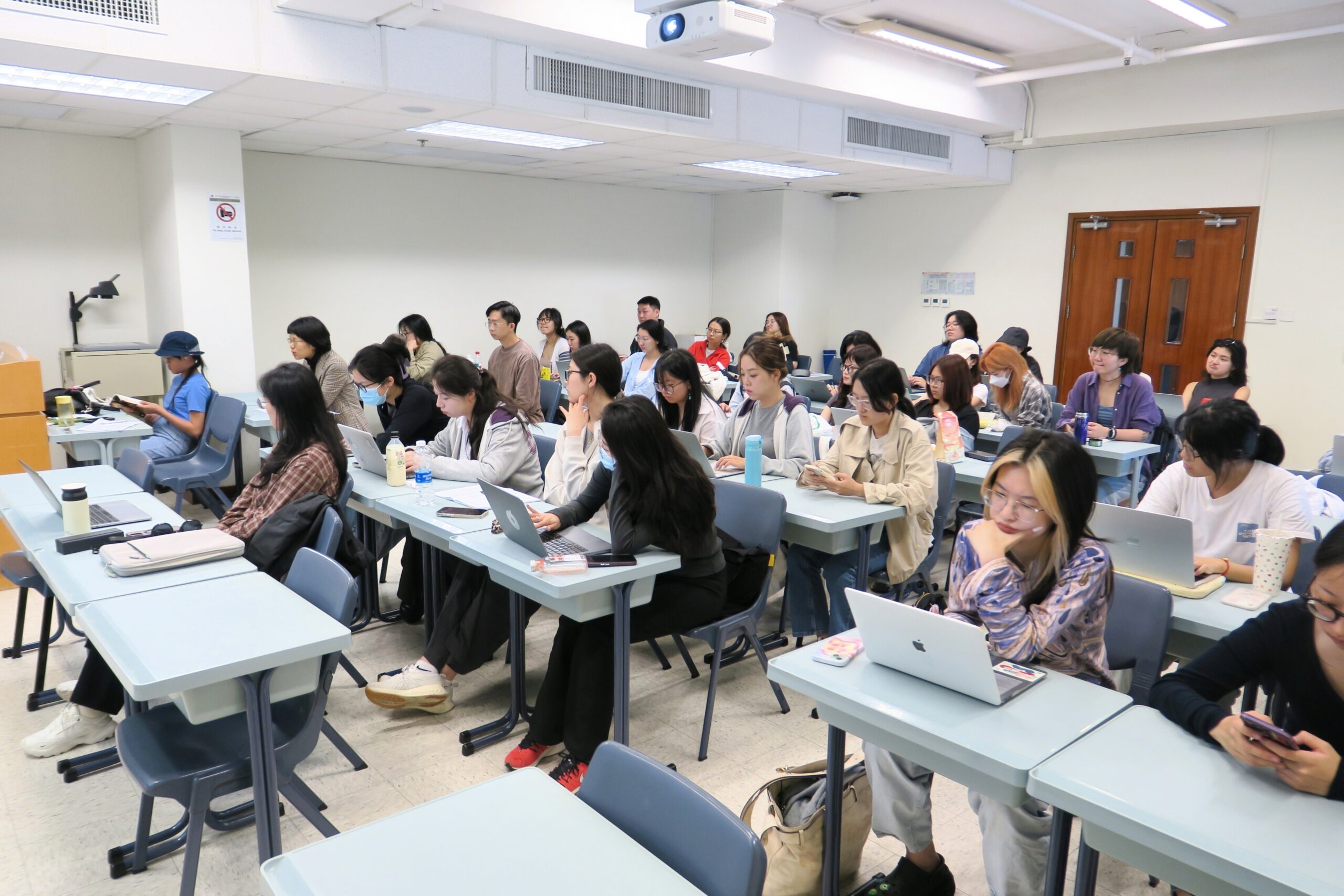
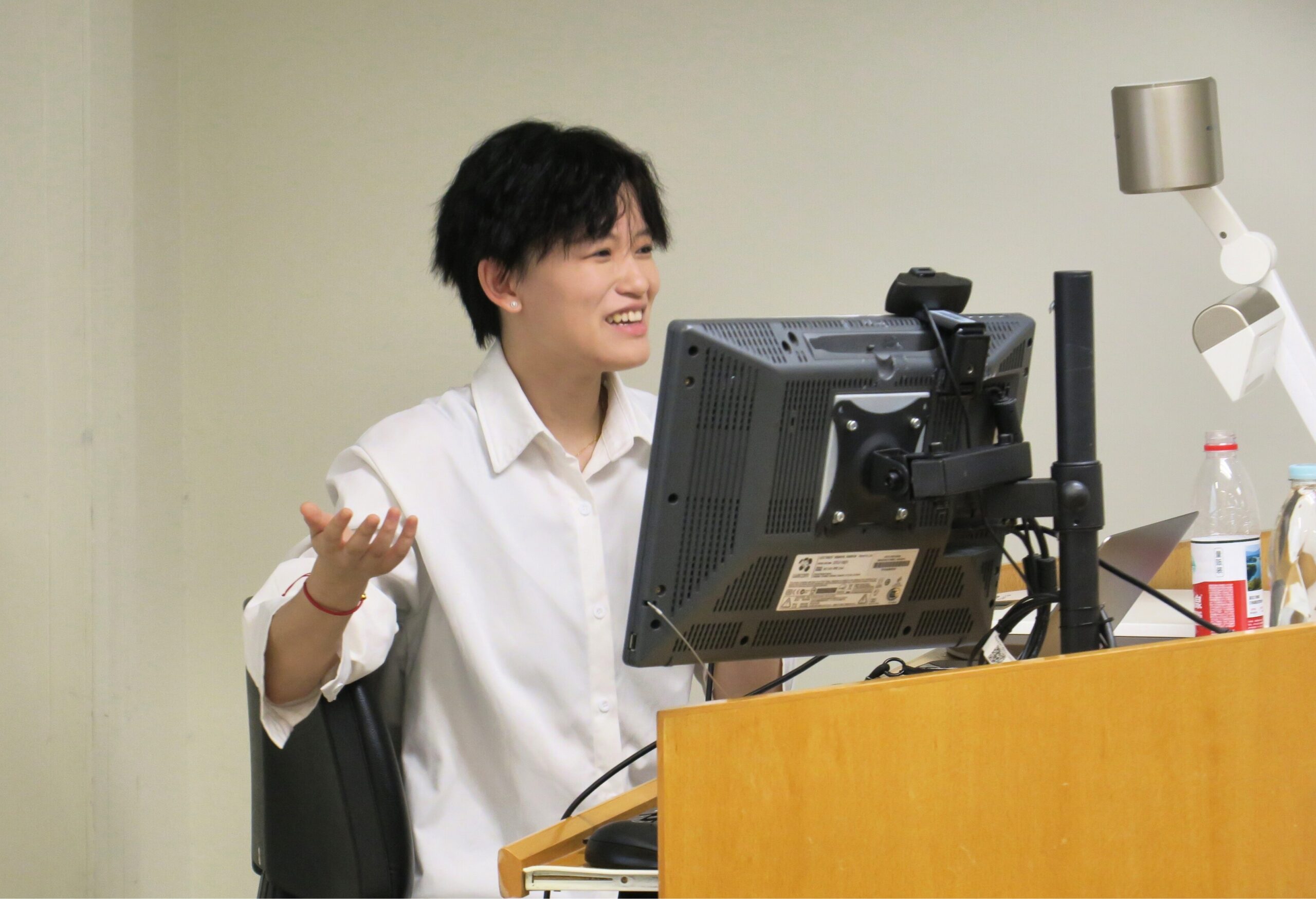
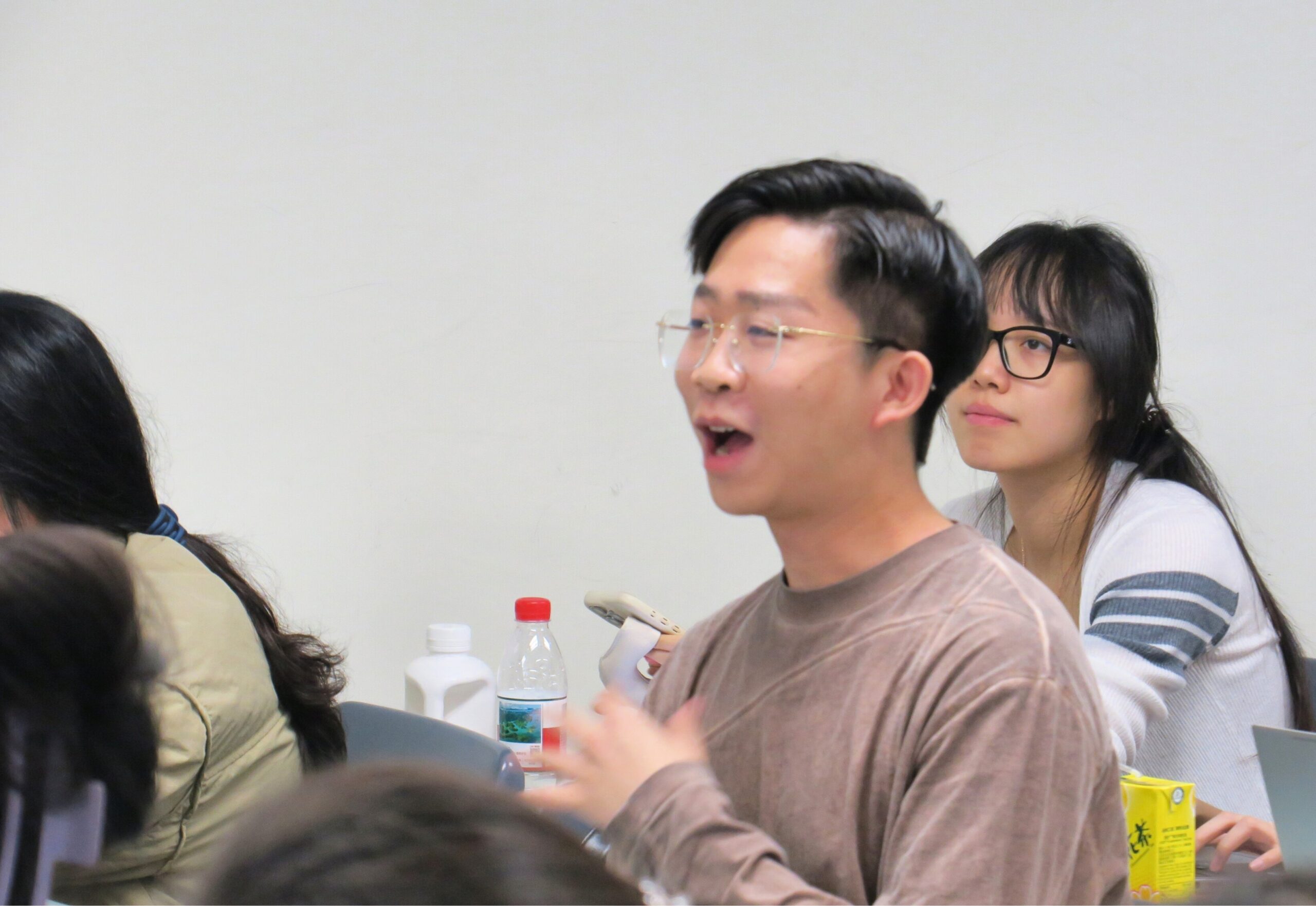
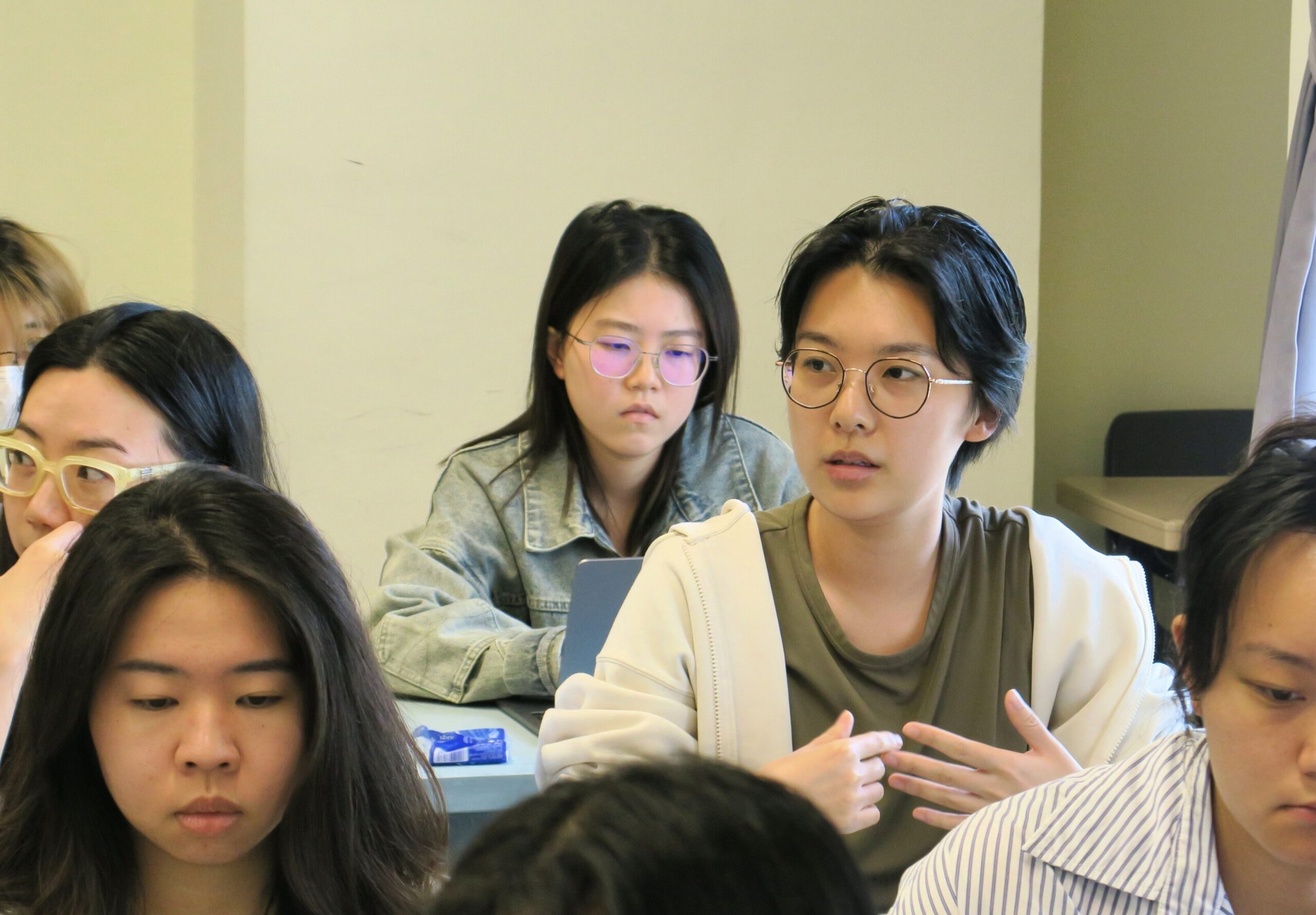
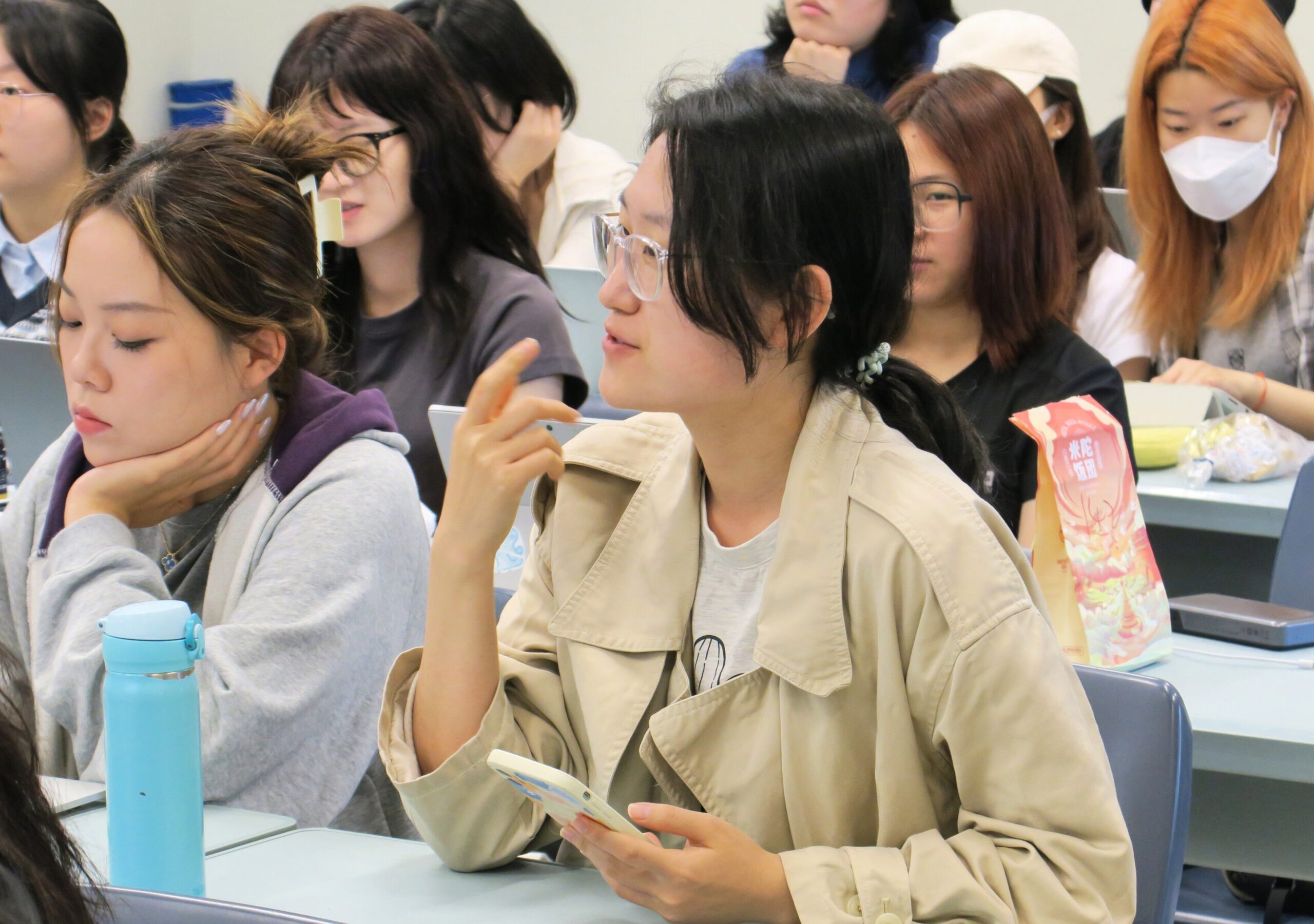
A
A
A
Contact Us